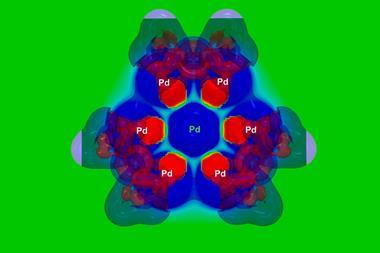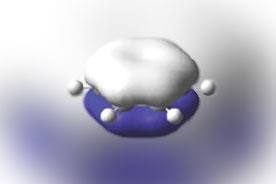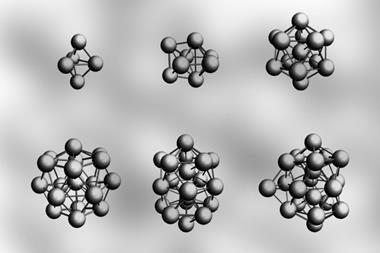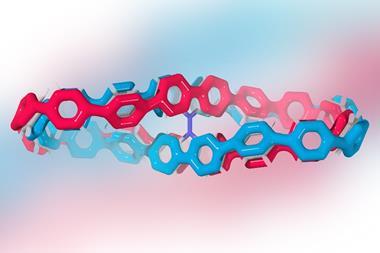
It’s blue, contains only three gold atoms and three tin atoms, but is packed with odd aromaticity – it’s the first stable trigold anion ring that’s also the first σ-Möbius aromatic molecule.
In most traditional aromatics like benzene, the orbitals that overlap and allow the electrons to freely run around the ring and are therefore responsible for aromaticity, are of the π variety. But overlapping σ orbitals can also house delocalised electrons. There are a few of these σ-aromatic molecules out there, like the hexaselenyl benzene cation or the only recently discovered hexaboron rhenium anion.
In both these σ aromatics, the overlapping orbitals form a cylinder around the ring. The new gold–tin cluster, however, is also Möbius aromatic. Its orbitals’ nodal planes wind themselves around the ring like a Möbius strip, a surface with a half twist and only one side. Overall, this makes the anion σ-Möbius aromatic, the first of its kind.
The molecule is also the first cyclic trigold anion – an ion that had previously only been observed in the gas phase. But the dark blue potassium salt of [(RSn)3Au3]–, where R is a bidentate ligand, is stable for several weeks when stored under inert gas. Its gold atoms form a triangle with the tin atoms sitting on the periphery to, overall, form a distorted hexagon.
The researchers behind the study are now cataloguing the compound’s reactivity, trying to find out whether it shows catalytic activity.
References
L Wang et al, Angew. Chem., Int. Ed., 2019, DOI: 10.1002/anie.201910731

















No comments yet